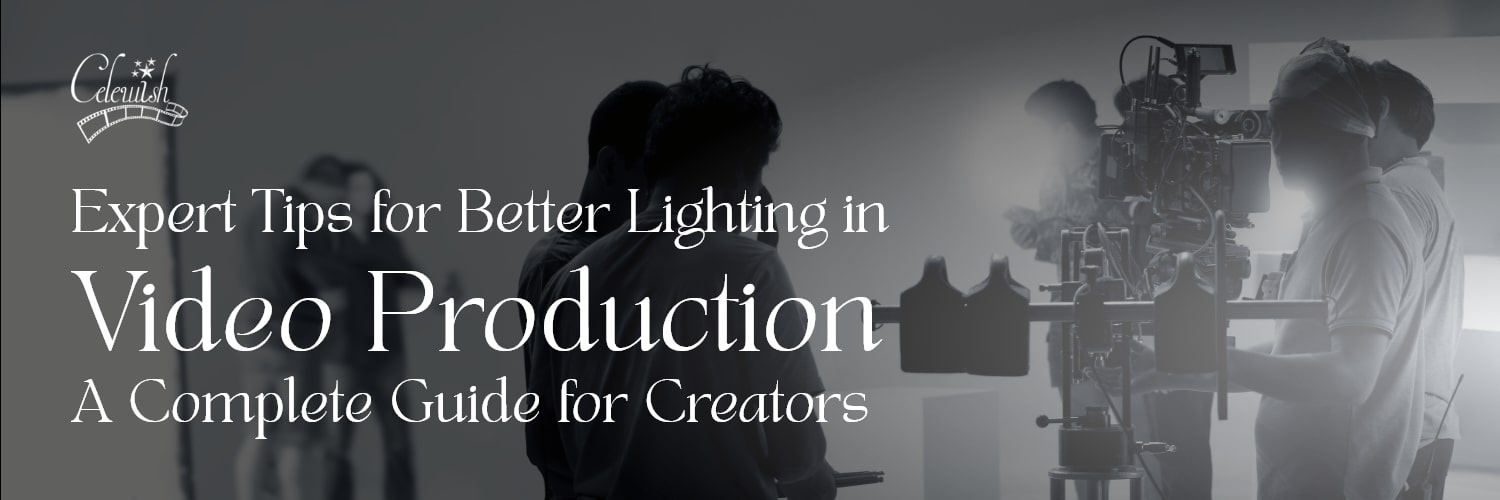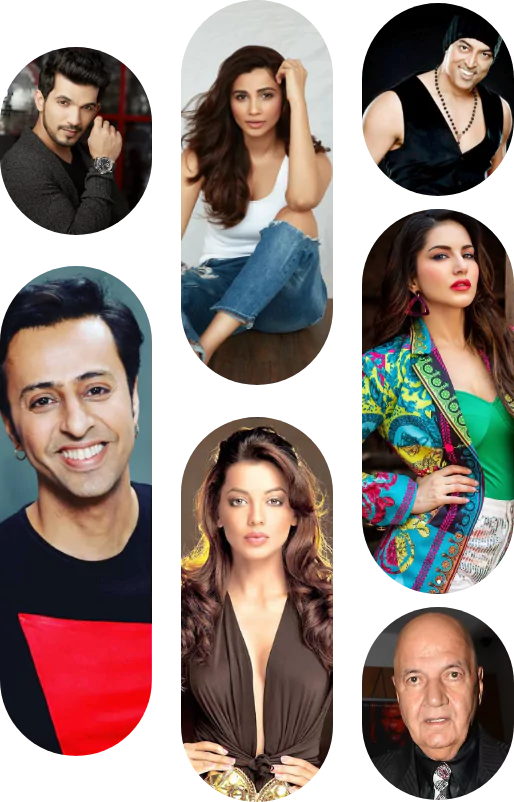
Have you ever seen a video and wondered how everything appears so ideally perfect, and the storytelling is just right? The secret of wonderful lighting is to produce professional-quality videos. Lighting is one of the most important aspects of video production and ultimately determines the format of your videos too! Whether you are a beginner in video creation or a professional, understanding how to control and use light will elevate your video production quality in the right way. This complete guide will look at some of the best practices and ideas on how to create better lighting for your videos in order to produce higher quality, more professional and more engaging videos for your audience too. So, get ready to explore tips for better lighting in video production in this blog post that makes your videos more engaging and expressive.
Why Lighting Matters in Video Production?
Lighting is important for video production - Why? This is the most common question in every creator's mind because a video's mood, tone and clarity are greatly influenced by the lighting. Lighting can change how or when your subject is viewed, or give more emphasis to what is important or what should be noticed, and make the frame deeper and more structured. Too little or poor lighting will cause unwanted shadows, or color fading, and saturated highlights, which generally will destroy the purity of your story. Beneficial tips for better lighting in video production will make the content eye catchy and make sure the audience keeps focussed on your vlog lighting, whether you are using video for short films, documentaries, interviews, tutorials, or social media platforms. It is important to learn and utilize good lighting techniques to create a higher quality and professional finished video.
Read More: The Ultimate Guide to Brand Video Production Locations
Tips For Better Lighting in Video Production
You don’t have to spend hours or money to get good lighting for your videos. Use these tips for your next video without spending so much. In this section, we're gonna discuss some tips for better lighting in video production!
1. Learn the Fundamentals of Three-Point Lighting
Three-point lighting is one of the most frequently utilized lighting setup in video production, which consists of:
1. Key Light: The major light or main light that is normally the most intense light that highlights your subject.
2. Fill Light: A similar but softer light that reduces the unwanted shadows created from the key light.
3. Back Light (or Rim Light): This light creates depth and a separation of your subject to your background.
2. Use Natural Light
Daylight is an excellent, free source of light for video production! If you’re capturing images outside, do it when the sun is not too harsh, high, or bright, as in the late morning or early afternoon. On the day of your shoot, avoid shooting when the sun is high and creating harsh shadows and shine. Mixing natural light with the best lighting for videography, LED panels, or softboxes can help to add visibility and control to your shots.
3. Balance Exposure Appropriately
Getting good exposure will help you produce a quality, professional-looking video. Too much light effect video on the subject can fade the details, while not enough brightness in the video results in dark images that are blurred in terms of quality overall. You need to assess your lighting as well as adjust it using histograms, zebra stripes, and gamma controls to make sure your subject is properly visible and that the image quality is sharp and even.
4. Purchase Quality Lighting Equipment
While natural light is great to work with, reliable lighting equipment offers a little more versatility and control. LED panels, often considered the best led light for video shooting due to their adjustable brightness and color temperature, can be suited to various setups. Softboxes offer diffuse light that is best for indoor shooting and interviews. Ring lights provide fairly uniform light, eliminate shadows, and are best for close-ups, beauty content, or a vlogging setup.
5. Understand Colour Temperature
How the colors in your video look and what mood they create depends largely on colour temperature. When you have warm white (3200K) it looks yellow, but with cool white (5600K) your lighting tends to be blue. Lighting should also fit in with the rest of the space where it is set up. This is why it’s helpful to match your lights if you’re recording a video—to avoid unusual colour differences. LED lights today are designed to let you control their colour. As part of essential video lighting tips, understanding and matching colour temperature ensures a natural and professional-looking result.
6. Soften Light with Diffusers
With Dazzling light, it makes strong highlights with shadows. When that occurs, your subject might not find it attractive. An umbrella, softbox, or even a white sheet diffuser will help spread the light. When these gadgets are used, the light will be softer and more pleasant, improving outcomes. Diffused light will be employed in close-ups, interviews, and beauty shots where the use of softer lighting is a necessity. For brand enquiry or commercial collaborations related to video production, you can reach out to our team as well.
7. Try Different Light Positions
Lighting angles have a significant impact on a scene's mood. Eye-level lighting looks natural and nice; on the other hand, direct lighting creates a strong, bold effect in the video. Experimenting with light angle and position enables you to find the creative setup that suits your video's mood and benefits the story you are attempting to tell. A thoughtful video shooting light setup plays a key role in achieving these effects and enhancing the overall visual impact.
8. Use Practical Lights Creatively
Visible light sources in your scene such as candles or lamps can enhance realism and create a more immersive atmosphere. These lighting effects help to integrate the visuals more naturally. Ensure that the shadows and reflections fit totally with the lighting so that the object doesn’t catch your viewer’s attention away from your main content. This kind of detail is most important in commercial video production, as both the look and professionalism matter a lot.
9. Manage Shadow Effectively
Shadows have the ability to create depth and texture in your video, but can be distracting or hide your subject if not managed. Soften your harsh shadows and direct where they are cast with fill lights or reflectors. Proper shadow control makes your video look better and more professional. This technique is often seen in high-quality productions featuring personalities like Shefali Bagga, where lighting plays a key role in enhancing on-screen presence.
Also Read: Exploring the Different Types of Brand Video Production for Maximum Impact
Wrapping Up - Picking Up the Right Video Style!
For video production, lighting is an important aspect that affects the end production greatly, based on how you use it at the time of production. With the above tips for better lighting in video production, you can create interesting, appealing, and engaging video content that engages your intended audience. Not to mention, it will not matter if you have natural light, artificial light, or both; having a good understanding of and mastering lighting techniques can improve the overall quality of any production. To have professional-quality productions, you should try out multiple lighting setups, spend some money on the proper lighting equipment, and keep practicing the art of lighting. Achieve pro-level lighting in your videos with expert tips from Celewish – your go-to platform for personalized celebrity video shoutouts and creator support.
Frequently Asked Questions (FAQs)
Q1. What is the best lighting setup for beginners?
For learners or beginners, the best setup for lighting contains a key light, fill light and backlight. You should use LED panels or softboxes for your lights. Get some daylight-balanced bulbs, which are about 5600K, and experiment with where you place your lights. Almost any lighting system you use will make your videos look much better and more professional.
Q2. How do I light my videos if I have no budget?
Use natural light from windows—it's free and effective. Shoot during the day, preferably near a large window with indirect sunlight. Use white bedsheets or reflectors (like foil-covered cardboard) to bounce and diffuse light. Household lamps with daylight bulbs also work. Avoid mixed lighting colours to keep the visuals clean. Position yourself facing the light for best results.
Q3. How to have better lighting in videos?
Use soft, uniform lighting to reduce harsh shadows (ideally, your main light source should be at a 45° angle from your face). The light should be set to be relatively neutral in colour, preferably daylight-balanced (5600K), to avoid unnatural good or bad colour casts. If you have a fill light or reflector, place that opposite your direct light source, and try to avoid down lighting. Regardless, you should have your camera located between the diffused lights and your face (facing the same direction) to provide an even light source.
Q4. What is the best lighting for product videography?
Use soft, diffused light to soften shadows and highlight product details. Generally, two diffusion softboxes placed at 45 degrees from your product will work well. A lightbox or light tent can also work for smaller items. Make sure to avoid utilizing strong or uneven light. Use a consistent temperature across any different lighting sources, around 5000–5600K which would keep the colors accurate. To add depth and contrast, you can usually include backlighting or backlights, too. You need to make sure to test the different angles to get the best results.
Q5. What’s the ideal color temperature for indoor videos?
Most ideal and indoor videos look best with a color temperature of 3200K, which matches warm lights. Most traditional bright bulbs use this temperature, and it makes spaces feel comfortable and cozy. When you have a window nearby or shoot in the day, using lights set to 5600K gives a natural result. Use your camera’s white balance function to get the real colours of your shots.

